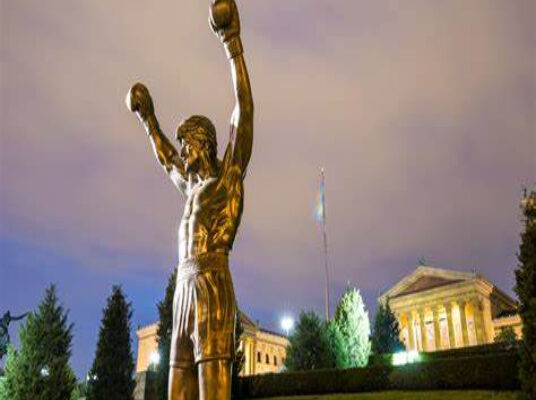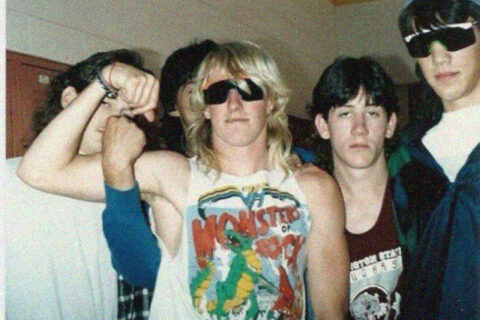In the debate about statues that no longer reflect our “shared values,” whatever that empty phrase may mean, I found myself thinking about statues of people who never lived. There are quite a few of them, movie characters, characters from literature and even from cartoons. In Illinois, for example, there is one of Superman in the town of Metropolis, one of Dick Tracy in Naperville, and one of Popeye in Chester. I could cut Illinois some slack in this regard, however, since I personally wouldn’t walk across the street to see a likeness of Abraham Lincoln or Carl Sandburg, and if any is ever erected of Hillary Clinton, Barack Obama, Everett Dirksen, Frank Lloyd Wright, Rod Blagojevich, well, you get the idea. Illinois can be grateful for the embarrassment spared them by the comics. The one region of the country whose statuary seems overwhelmingly to represent real people is the South. If you have an 80-foot statue of someone as authentic as Sam Houston, you don’t need an oversized likeness of the simpering Charlie Brown. Let Santa Rosa admire him, he’s their type.
But today, I am thinking about a trio of prizefighters, only one of whom is immortalized in bronze. The first, Charles “Sonny” Liston, was born in Sand Slough, Arkansas in the early 1930s, the exact date unknown. The next youngest of almost two dozen children of sharecropping parents, his childhood was one of physical abuse, poverty, and deprivation. He did two years in the Missouri State Penitentiary in the early 1950s and although he already knew how to fight, it was there that he learned to box. His ability to take a punch, his strength, an 84-inch reach, and enormous fists made him a fearsome opponent.
The details of Liston’s career needn’t concern us too much, although they will impress anyone with an open mind who cares to look them up. I’m thinking more about personal qualities that might actually resonate with a modern Southerner (regardless of race). Stoicism. A work ethic, and fighters don’t get anywhere without one. Courage. A refusal to knuckle under to capricious authority. Complaining was not an activity he much indulged in, nor did he wear the role of the victim. The press and indeed the liberal establishment, nearly as smug then as they are now, treated him with utter contempt as though he were nothing but a violent career criminal possessing an IQ in the lower double digits. JFK, of all people, told Floyd Patterson that Liston was an unworthy opponent, and that Patterson should not fight him, that it would set back the cause of Civil Rights!
Liston was a failure as a criminal and a success as a prizefighter. At times, he could be more witty than the buffoonish Muhammad Ali, over whom the media fawned slavishly, and he behaved more graciously toward his opponents. His ability to psychologically intimidate other boxers with silence and a glowering stare at weigh-in testifies to a shrewdness he was rarely given credit for.
Sonny Liston is most famous for four fights in the early 1960s; two lightning knockouts of Floyd Patterson from whom he won the heavyweight title, his first defeat by Cassius Clay after six rounds, and his loss in a rematch that was over so quickly many suspected that Liston took a dive. I’d like to think he didn’t, that he just met his match against a fighter who had figured out how to beat him, but who knows? Boxing has always been crime ridden and Sonny Liston’s life had been threatened more than once. However, it is Liston’s last fight in 1970, less than a year before he died, that I want to focus on here.
In a match in Sweden, he fought the journeyman Chuck Wepner, a former Marine whose early life hadn’t been a lot easier than Sonny Liston’s. Wepner never won a championship, but he put together a 35-14-2 lifetime record. About ten years younger than his opponent, Wepner went the distance but was soundly beaten and needed 78 stitches after the fight. He said later that Sonny Liston was the hardest puncher he’d ever faced. Wepner didn’t get a lot of respect from the press either, being given the sobriquet, “The Bayonne Bleeder.” Tough guys don’t dance. In 1988, he would do a stint in prison for cocaine possession. Later, he and his wife worked successfully as sales representatives in the fine wine and spirits business. To this day, he is still a presence in the boxing world. Some people have a way of picking themselves up after they stumble.
Sonny Liston cast the longer shadow in boxing circles and was better known to the world at large, but it was Chuck Wepner’s career (particularly his bout with Muhammad Ali) that would serve as an inspiration to Sylvester Stallone in creating the Rocky franchise. Stallone denied this for a long time but finally reached a monetary settlement with Wepner for plagiarizing his life. Thus, it is the fictional Rocky Balboa whose statue stands today in Philadelphia, a city riddled for decades with official corruption so extreme that Liston’s occasional brawls with the police or stints as an enforcer for loan sharks barely register. Philadelphia went to such lengths to be hostile to Sonny Liston that, when he relocated to Colorado, he declared that he would rather be a lamppost in Denver than the mayor of Philadelphia.
And so, I am proposing an act of cancel culture. Remove the monument to a fighter who never was, a disgraceful piece of simulacra that represents the theft of one fighter’s career and the memory-holing of another fighter’s very existence, and put up a statue of Sonny Liston, the heavyweight champion that “The City of Brotherly Love” despised.
-By Roscoe

O I’m a good old rebel, now that’s just what I am. For this “fair land of freedom” I do not care at all. I’m glad I fit against it, I only wish we’d won, And I don’t want no pardon for anything I done.






That second fight with Clay/Ali in ’65 tainted his legacy, such an obvious dive. His talent, his power should have placed him among the all-time greats, but quiet dignity wasn’t what blacks were being sold at the time. Ali treated other black boxers horribly, and Liston wasn’t the only guy whose legacy suffered for having fought him, Joe Frazier & George Foreman were two others. Frazier, famously, detested Ali for the rest of his life, and Foreman retired at the age 28 (the ’96 doc “When We Were Kings” is outstanding).